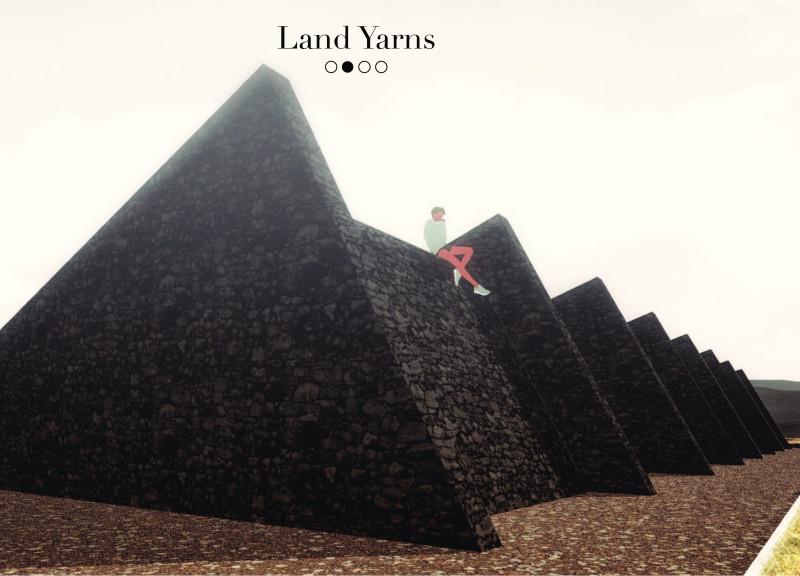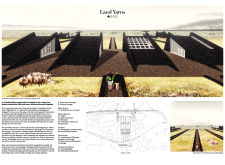5 key facts about this project
The design proposal for facilities at Grjótagjá and Vogagjá addresses the increasing number of tourists in Mývatnssveit. It combines essential services with a focus on preserving the natural landscape. The concept prioritizes connections within the environment, avoiding large or imposing structures. This approach respects the geographical importance of Grjótagjá's fault and leads visitors through a series of zones designed to enhance their experience of the area.
Site Integration
The project is structured into five key zones: arrival, general services, transition area, cave access, and camping/viewing areas. A new motor access point is located west of Grjótagjárvegur to limit its impact on the surrounding environment and protect the gorge. As visitors arrive, they encounter the General Service Area, which includes four modules. These modules offer essential facilities such as toilets, a café, and information desks. They are designed to fit naturally into the landscape, minimizing disturbances.
Ecological Transition
After leaving the General Service Area, visitors will walk through a newly vegetated moorland. This area serves as both an ecological transition space and as a pathway to the cave access points. It encourages the growth of local plants while directing foot traffic in a way that respects the site’s ecology. The pathway helps visitors appreciate the natural environment while guiding them toward the caves.
Cave Access and Viewing Platforms
Kvennagjá and Karlagjá are the two designated cave access zones. Each zone features enclosed courtyards that ensure visitor safety and effective management. This design allows for exploration of the caves while maintaining a controlled environment. The Camping and Viewing Area includes concrete stair bridges that cross the fault, providing safe vantage points for viewing Grjótagjá’s geological features. These features enhance accessibility and encourage thoughtful interaction with the landscape.
Materials and Detailing
Lava walls are used throughout the site for demarcation and control. This choice of material serves practical functions while resonating with the local geography. The lava walls blend into the surroundings, reinforcing the area’s identity and offering visitors a clearer connection to the natural environment. Such details help create a sense of place and emphasize the importance of the landscape.






















































